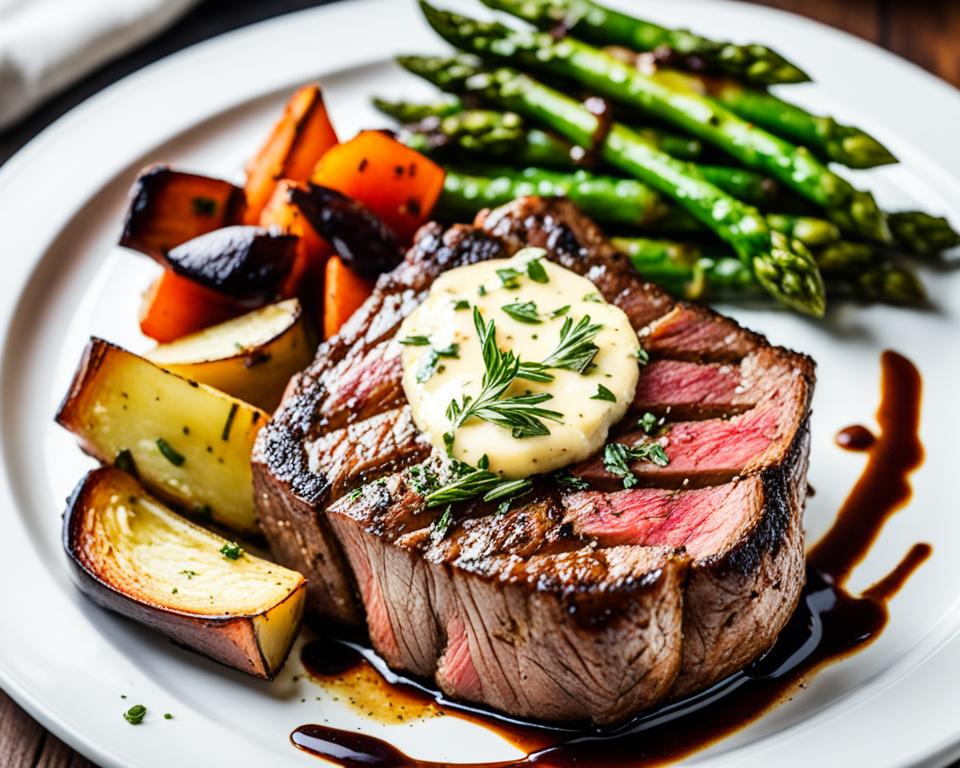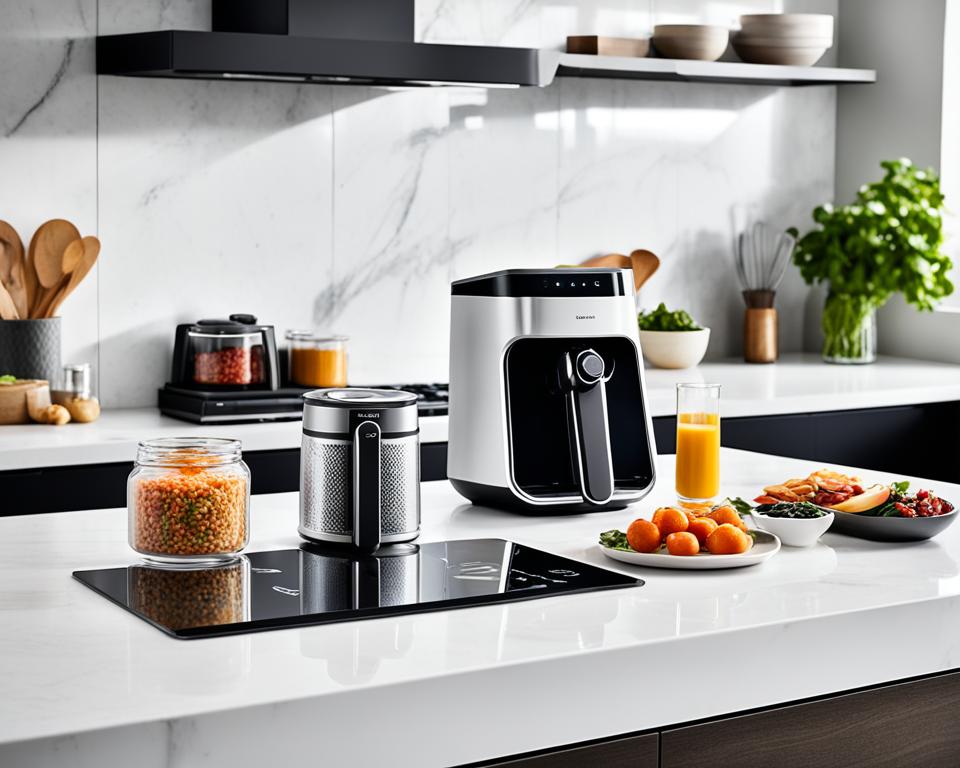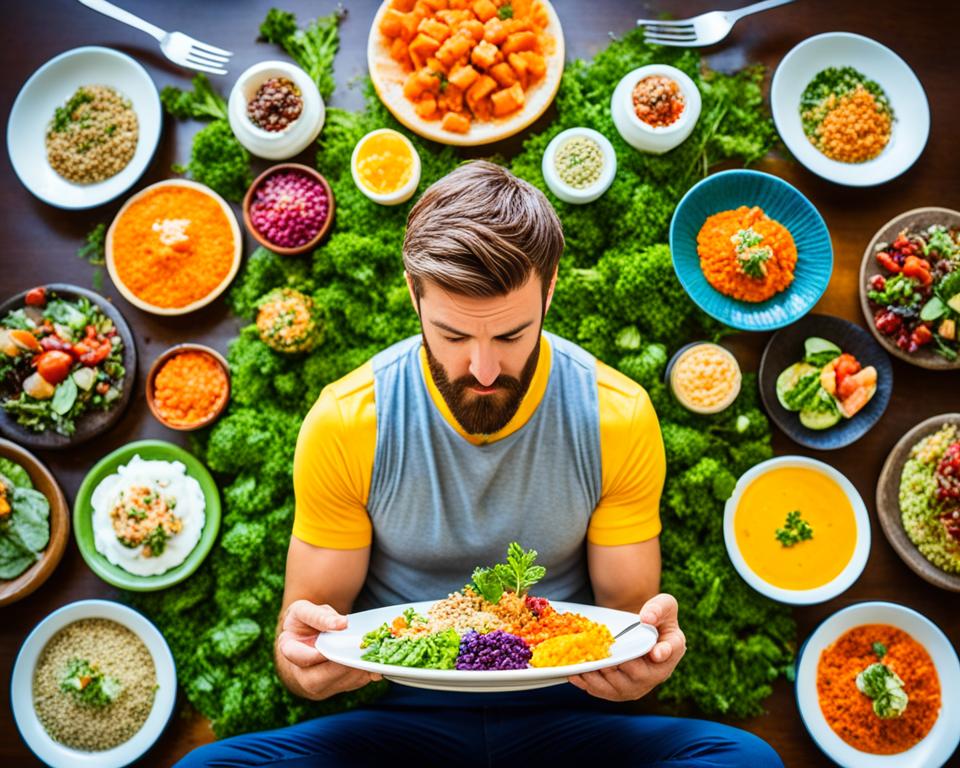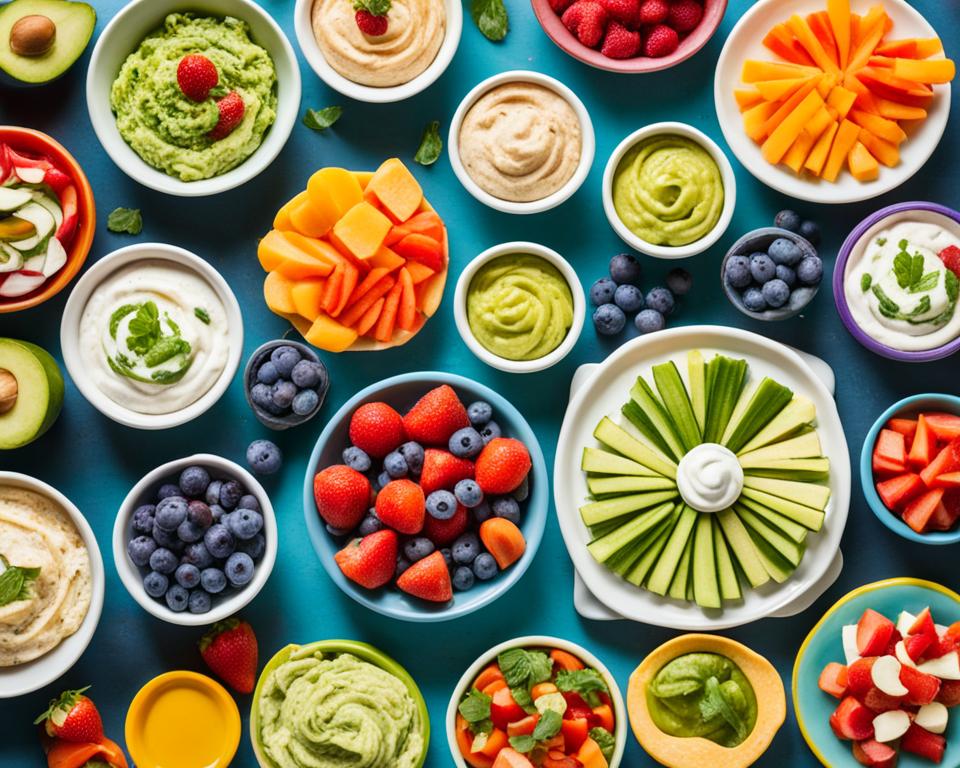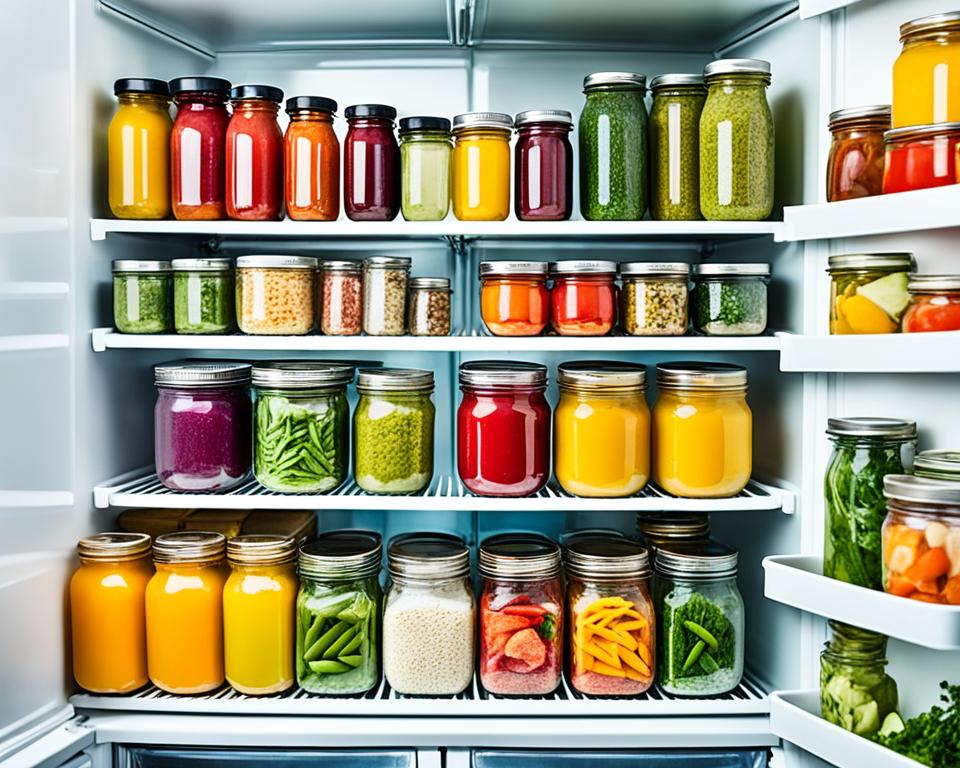We all love that culinary wizardry we experience in high-end restaurants, but who says we can’t replicate some of that magic in our own kitchens? With our top cooking tips, you’re about to take your home-cooked meals from delightful to downright divine. Crisp up your skills in deep-frying to achieve that covetable crunch often reserved for professional kitchens. Embrace the versatility of kitchen must-haves like sizzle platters and sheet pans to upgrade your meal-prep game. And let’s not forget the healthy cooking tips that show us how to cook smart – because great taste doesn’t have to compromise well-being. Have you considered how an expert technique like precision salting could bring out robust flavors in your dishes? Or that your fireplace can become your secret oven for that enticing smoky zest? We’re here to unveil these and many more tricks of the trade to elevate your culinary experiences at home. Get ready to impress with flavors and flair!
Key Takeaways
- Discover quick cooking tips to add restaurant flair to everyday meals.
- Learn how to turn simple tools into culinary game-changers with ease.
- Practice zero waste and sustainability with tips from the pros.
- Explore advanced salting techniques for an enhanced flavor profile.
- Experience healthy cooking tips for delicious, nutritionally balanced dishes.
- Use fire roasting to imbue your homemade cuisine with a smoky essence.
Unlock the Secret of the Perfect Fry
Welcome back to our compendium of best cooking tips, where we shine a spotlight on the illustrious world of frying. At Wildair, they’ve elevated this to an art form, producing a splendid rendition of fried squid that transcends the ordinary. We draw inspiration from their approach, revealing essential cooking tips and tricks that promise golden, crispy delights to home chefs like you.
A Deep-Dive into Frying Techniques
Frying may seem simple, but true mastery lies in precision. From the precise temperature to the timing, achieving that quintessential crunch is an exploratory journey into culinary finesse. Let’s embark on this deep dive, sharing insights that signal the difference between just another meal and a gastronomic triumph.
Choosing the Right Oil for Frying
Did you know that the oil you choose can dramatically influence the taste of your food? It’s about more than just the temperature – it’s the flavor, the aroma, and the smoke point. A table of various oils and their attributes stands as our guide to selecting the perfect match for your frying pursuits.
| Oil Type | Smoke Point | Flavor Profile | Best Used For |
|---|---|---|---|
| Canola Oil | 400°F (204°C) | Mild, Neutral | General Frying |
| Extra Virgin Olive Oil | 375°F (190°C) | Rich, Fruity | Low-Heat Frying |
| Peanut Oil | 450°F (232°C) | Light, Nutty | Deep Frying |
| Sunflower Oil | 440°F (227°C) | Very Neutral | Variety of Frying |
The Art of Achieving Golden Perfection
Achieving that elusive golden perfection is not just about the color. It’s about texture, taste, and bringing forth the best version of your ingredients. It’s the crunch that echoes through a room, the golden hue that delights the eye, and the succulent interior that follows.
* We aim for that Wildair gold-standard in our own kitchens, turning juicy segments of squid into golden treasures encased in a chicharron-like shell. This is the art we dedicate ourselves to – a labour of love and patience, culminating in a perfect fry that’s sure to impress.*
Join us, as we continue to imbue our home cooking with professional prowess, exploring more cooking tips for home chefs in the next section. Stay tuned and stay inspired, as we transform the everyday into the extraordinary.
The Unsung Heroes: Sizzle Platters and Sheet Pans
In the world of culinary arts, easy cooking tips often revolve around the ingenious use of simple tools. We seldom sing praises about the everyday heroes of the kitchen, yet they are the backbone of many splendid meals. Among these tools, the sizzle platter and sheet pan stand out as essentials, offering an array of uses that make them invaluable to us, the avid home chefs. So let us delve into the reasons these tools are so crucial and how to employ them to their full potential for an elevated home dining experience.
Imagine broiling a steak to succulent perfection or whipping up an impromptu cheesy toast. These are just mere glimpses into the vast possibilities when turning to a sizzle platter. Add to this the multifaceted sheet pan, and you unlock a treasure trove of essential cooking tips for optimizing your time and creativity in the kitchen. While they might not boast the flair of pricier gadgets, these kitchen workhorses batch-cook, roast, and crisp with a proficiency that can transform your weeknight cooking routine.
We’ve long admired the utility of both tools in professional settings where efficiency and versatility are key. Now, let’s explore how you can leverage these unsung heroes for more efficient, delicious, and visually appealing meals right at home.
| Tool | Main Use | Why It’s Essential | Pro Tip |
|---|---|---|---|
| Sizzle Platter | Broiling and roasting individual portions | Its small size means quicker heating and easier handling | Perfect for toasting nuts or making a single-serving dessert |
| Sheet Pan | Batch cooking and roasting | Provides even heat distribution for consistent results | Roast vegetables alongside your main for a complete meal on one pan |
There’s something to be said for the sheer joy of baking a handful of cookies on a whim without having to deal with an oversized, power-hungry apparatus. Or imagine the simple pleasure of presenting a sizzle platter straight from the oven to the table, still sizzling and oozing with aromas – it’s these thoughtful touches that can make an ordinary meal feel like a special occasion. With these cooking tips for home chefs, you’re not just crafting meals, you’re creating experiences.
As we dive deeper into the magic of high-level home cooking, keep these trusty tools at arm’s reach. They may not have the prestige of a sous-vide machine or the charm of a hand-carved mortar and pestle, but they certainly carry the promise of practicality and success in the everyday kitchen. Embrace them, explore with them, and enjoy the rich, delicious results they help produce.
Mastering the Art of Zero Waste Cooking
When we think about cooking tips for home chefs, it’s not just the flashy techniques that can elevate a meal; it’s also about embracing sustainability and resourcefulness. That’s why we’re taking a page from the playbook of Chicago’s own Abra Berens, who transforms the wilted and the withered into whimsical and tasty dishes. This zero waste approach is not only environmentally conscious but also a fun challenge that taps into our inherent creativity as cooks. Let’s explore how every scrap can have a second life as something delicious and how these healthy cooking tips can contribute significantly to our table and planet.
Transforming Leftovers into Culinary Delights
No leftovers should go to waste when they have so much potential to become a delightful meal once more. With some insight and imagination, we can all see how yesterday’s roast chicken can become today’s hearty chicken soup or how a bit of creativity can turn mushy apples into a luscious apple crumble. It’s these cooking tips and tricks that turn the mundane into the marvelous.
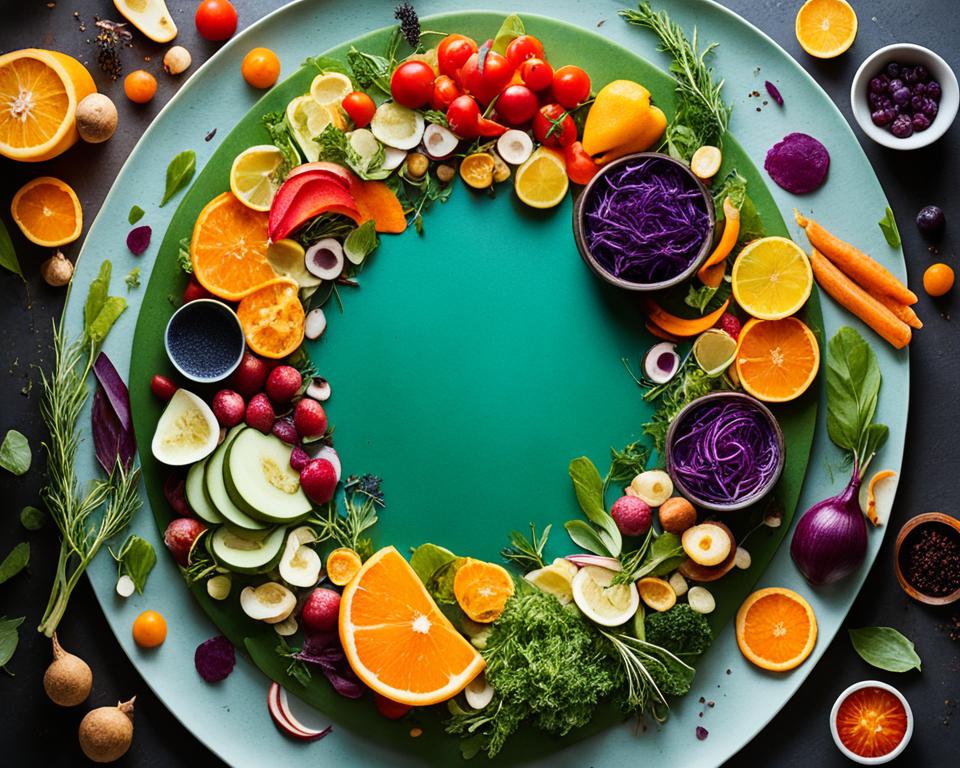
The Ultimate Guide to Using Up Produce
Gone are the days where a bruised tomato or a limping carrot gets tossed aside. With our guiding principles, even the most forlorn produce can be the star of a dish. It’s not just about saving money; it’s about recognizing the potential in every bit of produce that comes into our kitchens. Use those overripe bananas for a banana bread that’s both sweet and sustainable, or turn those softening berries into a vibrant berry compote that pairs perfectly with pancakes or yogurt.
Recipes That Embrace Every Scrap
Diving into the world of zero waste recipes, we discover that every piece of food we buy has value. The carrot tops? Those make for a handsome pesto. The stale bread? It’s the beginnings of a sublime panzanella salad. Here we have must-try recipes that celebrate the entirety of our groceries, ensuring healthy cooking tips go hand-in-hand with smart, sustainable practices:
| Leftover Ingredient | Recipe Idea | Healthy Tip | Zero Waste Bonus |
|---|---|---|---|
| Stale Bread | Panzanella Salad | Combine with fresh veggies for a nutritious meal | Eliminates food waste and repurposes carbs |
| Wilting Greens | Wilted Greens Soup | Packed with vitamins and perfect for detoxing | Uses greens that would otherwise be thrown away |
| Soft Berries | Fruit Compote | High in antioxidants and natural sugars for energy | Reduces fruit loss and provides a versatile topping |
| Overripe Bananas | Banana Bread | A healthier alternative for sweet cravings | Gives bananas a delicious purpose beyond the fruit bowl |
| Carrot Tops | Carrot Top Pesto | A herbaceous spread rich in flavor | Utilizes often discarded parts of the vegetable |
Part of the delight in home cooking is discovering how the small details can have a substantial impact, not just on our palate but on the environment too. Armed with these cooking tips for home chefs, each one of us can contribute to a more sustainable and flavorful food culture, one dish at a time.
Beyond the Shaker: Advanced Salting Techniques
As we journey into the depths of culinary flavor, we discover that salting is an art in its own right. Gone are the days when kosher salt was the go-to for every dish. Today, innovative chefs like James Syhabout at Hawker Fare are proactively incorporating briny fermented agents to magnify both taste and complexity. And as we continually provide top cooking tips, we’re thrilled to explore how these sophisticated salting techniques can transform your culinary creations.
Why settle for the mundane when you can infuse your meals with an unparalleled depth of flavor? Consider this one of our quick cooking tips: a dash of fish sauce can add a new dimension to braised lamb or elevate a simple gravy. With a sprinkle of imagination, we’ll show you how to harness these evolved salting methods in your own kitchen.
| Ingredient | Type of Salt | Flavor Contribution | Best Used In |
|---|---|---|---|
| Fish Sauce | Fermented | Umami, Salinity | Braised Meats, Dips |
| Miso Paste | Fermented | Savory, Sweet | Soups, Marinades |
| Anchovy Paste | Fermented | Rich, Salty | Dressings, Pasta |
| Capra | Brined | Tangy, Salty | Salads, Pizza |
| Olive Brine | Brined | Salty, Vinegary | Martinis, Vinaigrette |
We believe that with these cooking tips for home chefs, you can push the boundaries of traditional flavors in your kitchen. It’s about progressing beyond the shaker and doing what the best chefs do — taste, tweak, and transform each dish into something truly special.
Our aspiration is to make you confident in experimenting with these alternative salts, offering you the ability to master the balance of flavors that will have your guests marveling at your dishes. Whether it’s a simple weekday dinner or a grand culinary ensemble, your approach to salting can make all the difference.
Let’s bid farewell to the ordinary and welcome the next chapter in our culinary endeavors, spiced with the thrill of innovation and the gusto of creativity. Stay tuned, fellow home chefs, for more inspired cooking tips for home chefs that will forever change the way you season.
Embrace the Flames: Cooking with Fire
There’s a primal satisfaction that comes from grilling over a live flame. The crackle and pop of tinder transforming into coal, the smell of wood smoke, and the sizzle of fat dripping onto the fire — these are the elements that turn cooking into an experience. For us, it’s not just about the method but the journey of discovery, finding those expert cooking tips that lead to mouthwatering meals infused with the essence of fire.
Finding Flavor in the Fire
As home chefs, we seek out essential cooking tips that promise to infuse our dishes with that unmistakable smoky flavor. The glow of embers can impart a richness to ingredients that no stove-top technique can replicate. Think about the scent of bay leaf browned butter as it merges with the juices of an ember-grilled steak — the result is culinary magic that only fire can produce.
Turning Your Fireplace into a Culinary Asset
But how do we harness this ancient force in our modern kitchens? It’s simpler than you might think. Transforming your fireplace into a cooking haven is one of those easy cooking tips that is as practical as it is novel. With the right setup, you can roast, toast, and char to perfection, all within the comforts of your living room.
Guidelines for Safe and Delicious Open-Flame Cooking
Of course, safety is paramount when bringing the outdoors in. Here are our tried-and-tested guidelines to ensure each culinary adventure by the hearth is both safe and delectable:
- Always start with a clean fireplace to mitigate the risk of flare-ups and unwanted smoke.
- Use hardwoods like oak or hickory for a long-lasting, consistent burn that provides plenty of heat without overwhelming the food’s natural flavors.
- Ensure proper ventilation; open flames consume oxygen and produce carbon monoxide, so keeping the room airy is key.
- Invest in a good-quality grill grate that fits securely within your fireplace, giving you a stable surface to cook on.
- Keep a fire extinguisher nearby, just in case. It’s better to be prepared for any eventuality, even if you never need to use it.
With these guidelines, turning your fireplace into a culinary asset is not only possible, but set to become a favorite technique in your cooking repertoire. And as we continue on our journey, exploring essential cooking tips together, we open up a world where flavor knows no bounds, and every meal is a chance to explore and indulge.
Food Safety Myths Debunked
As dedicated home chefs seeking the best cooking tips, we often encounter well-intended advice about food safety. Many of us have come to adopt a cautious stance, especially when it comes to preparing meats, poultry, and eggs. The common mantra: “better safe than sorry” has led to an abundance of caution in the kitchen. However, are we being overly cautious at the expense of enjoying the full spectrum of culinary delights? In this section, we aim to unpack some of the food safety myths and present a balanced approach that adheres to both healthy cooking tips and the pursuit of exceptional cuisine.
Let’s address the perennial warnings about consuming undercooked protein sources. Yes, there are risks involved, but it is also true that many culinary experts encourage the appreciation of dishes such as medium-rare pork and softly cooked eggs. These dishes are enjoyed worldwide, and with the right knowledge and handling practices, they can be safe and enormously gratifying.
“Consuming raw or undercooked meats, poultry, seafood, shellfish, or eggs may increase your risk of foodborne illness.” This caution is familiar to us all, but through proper handling and preparation, the risk can be mitigated and these dishes can be savored in the way chefs intend.
With that said, it’s essential that we as home chefs understand the sources of our ingredients. The quality of the meat and eggs plays a crucial role in determining how we might safely consume them. For example, sourcing pork from reputable providers who adhere to stringent health standards might reasonably allow us to indulge in that juicy medium-rare chop.
- Purchase meats and eggs from trusted suppliers who maintain high-quality standards.
- Pay attention to the color, texture, and smell of proteins to ensure freshness.
- Use a meat thermometer to verify that meat has reached a safe internal temperature before consuming.
- Maintain proper hygiene and cross-contamination prevention techniques in the kitchen.
Adhering to these principles allows us to delve into the realm of dishes that were once considered off-limits. With a dash of courage and a sprinkle of caution, you can safely expand your home menu to include an array of tantalizing dishes that marry safety with satiety.

In conclusion, while it’s imperative to maintain a standard of food safety, we can navigate those standards with a well-informed perspective. Incorporating professional advice and cooking tips for home chefs, we unlock the potential for a more diversified and enjoyable approach to home cooking. And as we continue to challenge these misconceptions, we enhance not only the flavor of our meals but also our competency and confidence as cooks.
Cooking Tips for Creating Show-Stopping Desserts
As we continue our exploration of easy cooking tips, we recognize that a truly memorable meal isn’t complete without a touch of sweetness to round it off. Home chefs can harness the power of dessert to leave a lasting impression on their guests. It’s not just about creating something that satisfies the sweet tooth; it’s about presenting a dessert that’s visually compelling and tastes divine. From the way it’s plated to the first mouthful, these are the moments that guests will remember. We’re here to help you unveil the secrets to crafting desserts that shine as the grand finale to any dining experience.
Sweeping Your Guests Off Their Feet with Sweetness
Unveiling a dessert that takes the spotlight requires more than just following a recipe; it’s about storytelling on a plate. Our cooking tips and tricks will show you exactly how to captivate your audience. Envision a caramel drizzle that captures the light, a dollop of perfectly peaked meringue, or a chocolate garnish that’s a miniature masterpiece. Each of these elements plays a critical role in the seduction of the senses, ensuring your dessert does more than simply conclude the meal—it becomes the topic of conversation.
Techniques for a Delectable Presentation
The artistry of dessert lies in its presentation. It’s astounding how a simple quenelle of ice cream or a strategic swoosh of sauce can transform a dish from homemade to high-end. We advocate for using white plates as a canvas to make those vibrant colors pop, and for not shying away from garnishes that add both texture and flavor contrasts. These can range from brittle shards of caramel to a fresh sprig of mint—small additions that signal thoughtfulness and detail.
Homemade Ice Cream and its Variations
As we dive into the world of frozen delights, let’s consider homemade ice cream. It’s a universal favorite that can serve as a standalone treat or complement a variety of desserts. Taking a base of creamy custard, we can infuse an array of flavors from bourbon vanilla bean to rich, decadent chocolate. But why stop there? By folding in caramel swirls, chopped nuts, or fruit purees, we turn a simple ice cream into an artisanal creation. These variations not only add layers of flavor but also create a more visually intriguing presentation, ensuring our dessert offerings are both sumptuous and sophisticated.
Embrace these cooking tips for home chefs and watch as your desserts transform from mere courses to crowning achievements. Remember, the final touch of sweetness is your stage to shine, to delight, and to end each meal on a note as memorable as it is delicious.
Stock Up for Rich Flavors
One of our top cooking tips for infusing meals with incredible depth of flavor is to keep a good homemade stock always at hand. It’s a staple in our kitchens and an undeniable secret weapon in any home chef’s arsenal. Whether you’re looking to perfect your braising technique or aiming to add a velvety layer of flavor to your risotto, a rich stock is key. So, let us guide you on how to create and preserve this essential element, ensuring those deep, satisfying flavors are just a ladle away.
We recommend dedicating a day to stock preparation—turning chicken bones or vegetable scraps into gold. You’ll be rewarded with a base that is not only superior to store-bought options but also embodies the very essence of essential cooking tips: embodying care, quality, and flavor. Here’s a straightforward approach to stock making that promises to elevate your dishes:
- Gather Quality Ingredients: Start with fresh vegetables, such as carrots, onions, and celery, and chicken bones – perhaps saved from a recent dinner.
- Simmer Gently: Combine your ingredients in a large pot with enough water to cover them and let everything simmer on a low heat, coaxing out those intricate flavors.
- Strain for Purity: After a few hours of simmering, strain your stock to ensure a clear and clean base for your cooking.
Now, with your stock prepared, let’s delve into the practical yet quick cooking tips to preserve it. Options such as freezing in ice cube trays for small portion use or storing in freezer-safe containers can be a game-changer when time is short, and a flavorful meal is in demand. Here’s a table to help organize your stock storage:
| Storage Method | Description | Shelf Life |
|---|---|---|
| Refrigeration | Keep stock in airtight containers | Up to 1 week |
| Freezing (Ice Cube Trays) | Freeze small portions for easy use | Up to 3 months |
| Freezing (Containers) | Store larger quantities for substantial dishes | Up to 6 months |
Remember, embracing this approach means you’re always a step ahead, equipped with a foundation for a multitude of recipes – from soups and stews to grains and pastas. It’s these decisions that amplify your home cooking, proving why home-made stock is a cornerstone among our essential cooking tips.
So, the next time you plan your kitchen endeavors, consider the humble, yet transformative power of stock. It is our hope that with these quick cooking tips, you will discover the vast difference a thoughtfully prepared base can make in the overall quality of your meals. Happy cooking, and relish in the rich flavors that await!
Spice up Your Life: Secrets of Seasoning
As purveyors of the top cooking tips, we know that seasoning is more than a dash of salt or a sprinkle of herbs. It’s the alchemy that transforms a good dish into an unforgettable one. To elevate your home cooking, let’s uncover the strategic use of seasoning to enhance flavor and create dishes that resonate with depth and distinction.
Choosing Your Spice Arsenal
We believe that to excel in the culinary arts, a chef’s spice rack should be as tailored and diverse as their palate. The selection of spices, herbs, and blends is essential to infusing dishes with complex layers of flavor. We encourage our community of home chefs to thoughtfully curate their collection, selecting quality ingredients that speak to their unique cooking style. Through this, you can ensure each meal is a reflection of your culinary journey and dedication to crafting exceptional food.
| Spice | Flavor Profile | Dish Pairing | Healthy Benefit |
|---|---|---|---|
| Turmeric | Earthy, slightly bitter | Curries, marinades | Anti-inflammatory properties |
| Cumin | Warm, earthy | Tacos, stews | Aids digestion |
| Coriander | Lemony, nutty | Roasted vegetables, soups | Antioxidant-rich |
| Smoked Paprika | Sweet, smoky | Barbecue sauce, rubs | Rich in vitamins A and E |
| Cardamom | Sweet, spicy, aromatic | Desserts, teas | May lower blood pressure |
Balancing Flavors and Adding Depth
Mastering the art of seasoning is as much about balance as it is about intensity. To impart a harmonious blend of flavors in your dishes, introduce spices early during cooking to allow them to meld and develop. Slow simmering dishes are the perfect canvas for layering spices, creating a symphony of flavors. A clever tip from the realms of healthy cooking tips is to utilize acids such as lemon juice or vinegar not only as a finishing touch but also during the cooking process to elevate and brighten the flavors.
- Start with a base layer by adding robust spices early in cooking.
- Introduce fresh herbs mid-cooking to infuse delicate aromas.
- Finish with a touch of acid to lift and define the flavors.
We are passionate about sharing the best cooking tips that make a real impact in the kitchen. By harnessing the power of seasoning with intention and care, you open a world of culinary possibilities that truly spice up your life.
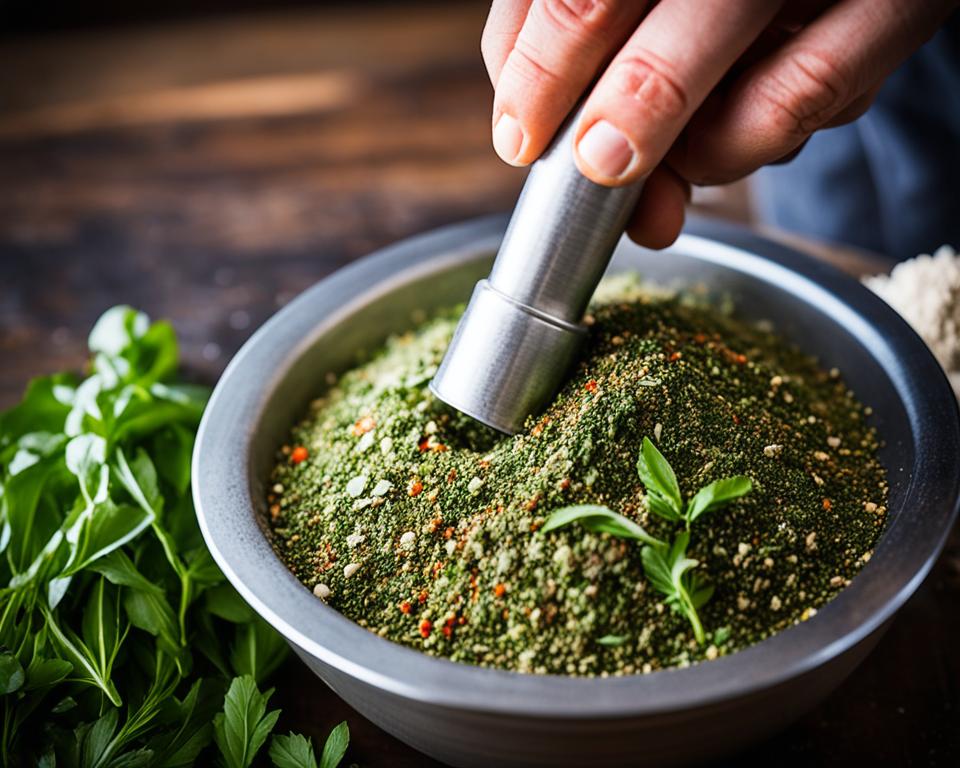
Plating with Elegance: Tips for Home Chefs
In the culinary world, the visual presentation of a dish is nearly as crucial as its taste. We believe that plating with elegance is one of the ultimate cooking tips and tricks that can turn a meal into an experience. Whether it’s a simple family dinner or a formal gathering, thoughtful plating elevates the dining experience.
Imagine the vibrant colors of your dish popping against the backdrop of a crisp white plate, the allure as guests discover each element of the meal through their visual journey. These are the simple yet effective easy cooking tips we cherish. Here’s how we transform the visual appeal of our home-cooked meals with finesse.
- Select the Right Plate: The choice of dishware sets the stage for your meal. Neutral colors like white or soft pastels accentuate the food’s natural beauty.
- Compose with Balance: Think of the plate as your canvas and aim for a harmonious distribution of elements, giving each component enough space to stand out.
- Contrast Textures: Combine different textures for a more dynamic presentation. Contrast the crunch of a crumble with the smoothness of cream, for example, to captivate the senses.
- Add a Pop of Color: Garnishes should not only complement the flavors but also introduce a splash of color. Fresh herbs, edible flowers, or even a sprinkle of spices can make a dish shine.
- Sauce with Purpose: Don’t just pour sauce over a dish; use it as an intentional design element. A squeeze bottle can create delicate lines or use the back of a spoon for an elegant swoosh.
| Element | Function | Visual Impact | Tips for Execution |
|---|---|---|---|
| Base Ingredient | Foundation of the dish | Defines shape and size | Plate from the center and build upwards for height & drama |
| Color Contrast | Visual excitement | Draws the eye | Edible flowers or bright veggies add a vibrant touch |
| Texture | Depth and interest | Invites exploration | Combine creamy with crunchy, or tender with crisp |
| Garnish | Flavor enhancer | Adds finesse | Less is more; choose garnishes that complement the main flavors |
| Saucing | Ties the dish together | Creates movement | Be intentional with your placement for both taste and aesthetic |
Remember, each dish we craft is an expression of our culinary story. These cooking tips for home chefs are not just techniques; they are an invitation to delight and surprise with every plate you present. Be bold, trust your instinct, and take the time to perfect the art of plating. The oohs and aahs at the table will be well worth the effort.
Let these approaches and easy cooking tips become your signature as a home chef. Plating with intention is the silent symphony that preludes each bite, setting the tempo for a memorable dining experience. As we continue to refine our culinary expressions, let’s cherish these moments of creation, knowing that each plate we serve is a masterpiece of our making.
Hone Your Knife Skills for Culinary Success
Among the myriad of cooking tips for home chefs, the mastery of knife skills stands out as foundational. With the right techniques and a bit of practice, you can chop, slice, and dice with the aplomb of a seasoned chef. Let us demystify the process and guide you through cultivating precision cuts that not only enhance the presentation but also ensure even cooking for a flawless outcome in your culinary endeavors.
Chopping with Precision and Safety
Starting with a sharp, well-crafted chef’s knife and a sturdy cutting board sets the stage for safety and success. We emphasize the importance of developing a sure and stable grip on the knife, maintaining focus and taking care as you make those cuts. Each slice should be a deliberate and considered motion, honing both your efficiency and safety in the kitchen. Remember, a sharp knife is less prone to slipping and can make your prep work not only safer but also more enjoyable.
Essential Cuts Every Home Chef Should Know
Now, let’s dive into the array of cuts that are the building blocks for a multitude of dishes. From the fine brunoise to the more robust chop, mastering these cuts is a testament to your culinary prowess. Precision is not just about the final appearance—it’s about how each piece cooks uniformly, impacting flavor and texture.
| Cut Type | Description | Common Use | Pro Tip |
|---|---|---|---|
| Brunoise | Fine dice, typically 1/8 inch | Garnishes, soups | Maintain a steady rhythm to achieve uniform pieces |
| Julienne | Matchstick cuts, 2-3 inches long | Stir-fries, salads | Use a guiding hand to create even strips |
| Chiffonade | Thinly sliced leafy vegetables or herbs | Garnishes, wraps | Roll leaves into a tight bundle before slicing |
| Dice | Square cuts, size varies | Salsas, roasted veggies | Start with a julienne cut, then cross slice |
| Mince | Very fine cut, smaller than brunoise | Herbs, garlic for intense flavor | Rock the knife over the ingredient to mince without bruising |
By honoring these essential cooking tips, every dish you prepare will be a testament to your dedication and skill. Whether it’s the symmetrical beauty of a vegetable medley or the aromatic allure of finely minced herbs, the way you wield your knife can elevate your cooking from home-style to haute cuisine.
We share these expert cooking tips not just to foster precision in your cuts, but to inspire confidence in your overall approach to the art of cooking. Our passion is not only for the flavors and textures that we create but for the grace and skill with which we prepare every meal. Embrace these practices and make each slice a step towards culinary excellence.
Cooking Tips: Foundational Skills for Home Chefs
As we share our best cooking tips, we’re reminded that the journey to becoming proficient in the kitchen is rooted in mastering foundational skills. Beyond collecting beloved recipes, every home chef should focus on the foundational skills that have stood the test of time. These include whipping up a baveuse omelette, searing a steak to the perfect doneness, crafting an array of mouth-watering sauces, preparing a flaky shortcrust pastry, and finely chopping an onion. Such elemental prowess provides the techniques to pivot across a variety of cuisines and create consistently delicious meals.
For us, embracing quick cooking tips means optimizing our kitchen for efficiency: it’s about having an organized space to channel our culinary creativity. A well-equipped kitchen, complete with sharp knives and durable pans, forms the infrastructure for gastronomic success. Investing in quality tools isn’t just prudent—it’s paramount. Tasting and adjusting seasoning as we cook, we learn the subtle art of balance, bringing out the rich complexities of flavor. Additionally, a keen understanding of essential food chemistry, such as the Maillard reaction, broadens our cooking horizons, ensuring that every sear or sauté is not just a step but a leap towards taste excellence.
Working with healthy cooking tips, we’re always conscious of the quality of our ingredients, as they are the bedrock of our cooking. Acquiring knowledge on sourcing the finest and freshest produce heightens the flavors on our plates, enhancing our home dining experiences. And when a sauce splits or an emulsion falters, we’re armed with the know-how to rescue it, preventing waste and preserving the luxurious textures of our dishes. Through these best cooking tips, we emphasize that learning these skills is a perpetually rewarding journey—one that elevates our everyday mealtime into an art form, and one that we are thrilled to traverse together.
FAQ
What are some quick cooking tips for elevating meals at home?
To quickly elevate your home cooking, try mastering a few key skills: perfect frying techniques, using sizzle platters and sheet pans for versatility, and implementing advanced salting techniques. For health-focused methods, practice zero waste cooking and familiarize yourself with proper food safety. Lastly, keep your meals visually appealing, and don’t forget to taste and adjust seasonings as you cook.
How can I achieve the perfect fry at home?
Achieving the perfect fry involves using the right frying temperature, choosing the appropriate oil with a suitable smoke point, and aiming for golden, crispy perfection. Remember to fry in small batches to avoid dropping the oil temperature, which can lead to soggy food. Also, pat your food dry before frying to reduce splattering.
What is the significance of using a sizzle platter or sheet pan in cooking?
Sizzle platters and sheet pans are incredibly versatile tools in the kitchen that can be used for a variety of cooking methods. They’re perfect for efficiently cooking individual portions, roasting vegetables, or baking proteins. These tools help optimize space in your oven and make cleanup easier.
Can you provide some easy tips for zero waste cooking?
An easy tip for zero waste cooking is to use every part of your ingredients, from vegetable peels to meat bones, in your cooking. You can make stocks from scraps, use wilting greens in soups or stews, and explore pickling or fermenting to preserve food. Creativity is key—think of new ways to give life to what you might otherwise discard.
How can salting techniques improve my cooking?
Salting is not just about adding flavor; it’s about enhancing and balancing the flavors of the other ingredients in your dish. Experiment with different types of salt, such as sea salt, rock salt, or flavored salts. Also, try advanced techniques like curing or using fermented seasonings to add complexity to your dishes.
What are some expert tips for cooking with an open flame?
Cooking over an open flame adds a smoky depth of flavor to your food. Use hardwoods like oak or hickory for a long-lasting burn and aromatic smoke. Monitor the temperature closely and cook food on the outskirts of the flame to avoid flare-ups. Don’t forget to rest your meat after cooking to ensure it’s juicy and tender.
How can I make my homemade desserts stand out?
Focus on both flavor and presentation. Use quality ingredients for the best taste and practice decorating techniques such as piping, drizzling, or creating eye-pleasing layouts on the plate. Experiment with homemade variations of classics, like ice cream, for a personal touch that will impress your guests.
What is the key to a delicious and visually appealing plated meal?
The key to an appealing plated meal is to balance the elements of color, height, and texture. Use white dishes as a canvas to make your food pop, garnish thoughtfully, and arrange your elements in a way that is pleasing to the eye. Remember, we eat with our eyes first, so presentation matters.
Why are knife skills important in cooking, and how can I improve them?
Good knife skills ensure safety, efficiency, and the proper cooking of ingredients. To improve, start by using a sharp, high-quality chef’s knife and practice making consistent cuts. Learn the basic cuts like chopping, dicing, and julienne, and practice regularly to build speed and precision.
What foundational cooking skills should every home chef master?
Every home chef should know how to cook eggs in multiple ways, including making an omelette, sear and cook a steak to varying doneness, prepare a variety of sauces, make a shortcrust pastry, and properly chop an onion. These skills provide a strong basis for a wide range of dishes you might want to cook.

